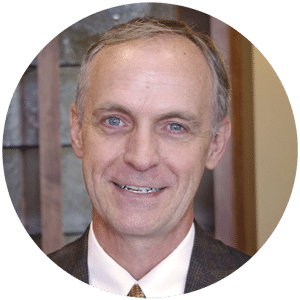Vaisala sensors help meteorologists study weather
BOULDER — Vaisala meteorological sensors are, by design, about the toughest money can buy. Dropped, floated or rocketed into hurricanes, tornadoes and even battle zones, they do the old Timex ad campaign ? ?takes a lickin’ and keeps on tickin’? ? at least one better.
So perhaps it’s not surprising that the Helsinki, Finland company easily weathered the financial storm of 2001. With a high percentage of its products, especially those manufactured in the United States, going to meteorological researchers and defense forces, the company also is centralizing its U.S. manufacturing operations in Boulder County.
?The company did well, considering the year,? said Hannu Patrikainen, general manager of the Vaisala-Boulder Operations. ?I think that has to do with (the stability of) our clients.?
SPONSORED CONTENT
And stable clients translates into a stable financial picture for the Vaisala Group, which saw its net sales grow by 2.2 percent, to 183.5 million euros (about $173.3 million), during its last fiscal year and showed a net profit of 25.5 million euros (about $24 million).
VilhoVaisala, who invented the world’s first radiosonde in 1931, established the firm in 1936. Radiosondes automatically measure and transmit meteorological information such as temperature, humidity and atmospheric pressure and have been sent up on weather balloons pretty much ever since the Finnish professor’s invention. On a balloon they travel up to 30 kilometers and were really the world’s first significant meteorological data input on upper-air conditions.
Measuring upper-air conditions, historically, proved extremely important for weather forecasting and aviation. In today’s world of climatology and extreme-weather forecasting, it has taken a heightened place for researchers. Hurricane researchers deployed from Florida are using a dropsonde ? that’s a radiosonde dropped from an airplane with an automatically deployed parachute ? manufactured here. Equipped with a global position system (GPS) unit, which gives both location and wind-speed information, these units are dropped into developing ?eyewall? locations and relay back the meteorological information researchers are using to model what may, or may not, become a hurricane.
Researchers around the nation, and world, purchase radiosonde, dropsonde and rocketsonde products from Vaisala, but a great number of U.S. business originates at the National Center for Atmospheric Research (NCAR) in Boulder. Here much of the engineering for upper-atmosphere meteorological instruments is conducted for products used by researchers working around the globe, and they count on the accuracy and dependability that Vaisala products provide.
?We use a (Vaisala) sensor module that goes into a product here that gets dropped into hurricanes,? said Terry Hock, an electronic engineer at NCAR. ?We have their sensors in Oklahoma for a water vapor initiative that’s helping to understand how tornadoes are formed.
?We’ve actually been using their products on a wide variety of instruments and we plan on continuing to use their products.?
Bob Rives, a mechanical engineer at Vaisala, said it’s really not the hurricane itself that’s most demanding on the company’s dropsondes, but the process of dropping them out of a plane. ?Once they are in the winds, they are floating on those winds,? he said. ?But coming out of the plane they are going 400 mph and in a lot of turbulence. They have to right themselves before the parachute deploys.?
Vaisala has two plants in Boulder County, one at Boulder Municipal Airport and one on Baseline Road west of Lafayette. In total, both plants employ about 50 people, most of them conducting final assembly of the upper-air products. The company decided early this year to build a facility at Louisville’s Colorado Tech Center to house most of the U.S. manufacturing. The 39,000-square-foot manufacturing and office center, which should be completed by the end of the year, will house 70 to 80 employees, Patrikainen said.
North American sales accounted for 37.5 percent of the company’s net sales, and the upper-air division accounted for about 37.9 percent of those total sales. That speaks a great deal about why the company is centralizing its U.S. operations and why Boulder, as much of the focus of the upper-air research, was chosen.
?The U.S. market has become increasingly important for us, and its share of the Group’s net sales has been increasing,? said Vaisala, group president, and Pekka Ketonen, chief executive, in a prepared statement. ?By centralizing the operations we want to show our commitment to the North American market and to our customers.?
The Louisville facility will receive, in addition to existing Boulder County operations, aviation weather system production and after sales services from Columbus, Ohio and weather station and systems production from Sunnyvale, Calif. The company’s other U.S. offices will work on sales, customer service and product development.
A great deal of Vaisala’s other business comes from automated surface-measurement stations, both meteorological and environmental. The company employs 1,100 people around the globe.
BOULDER — Vaisala meteorological sensors are, by design, about the toughest money can buy. Dropped, floated or rocketed into hurricanes, tornadoes and even battle zones, they do the old Timex ad campaign ? ?takes a lickin’ and keeps on tickin’? ? at least one better.
So perhaps it’s not surprising that the Helsinki, Finland company easily weathered the financial storm of 2001. With a high percentage of its products, especially those manufactured in the United States, going to meteorological researchers and defense forces, the company also is centralizing its U.S. manufacturing operations in Boulder County.
?The company did well, considering the year,?…
THIS ARTICLE IS FOR SUBSCRIBERS ONLY
Continue reading for less than $3 per week!
Get a month of award-winning local business news, trends and insights
Access award-winning content today!

